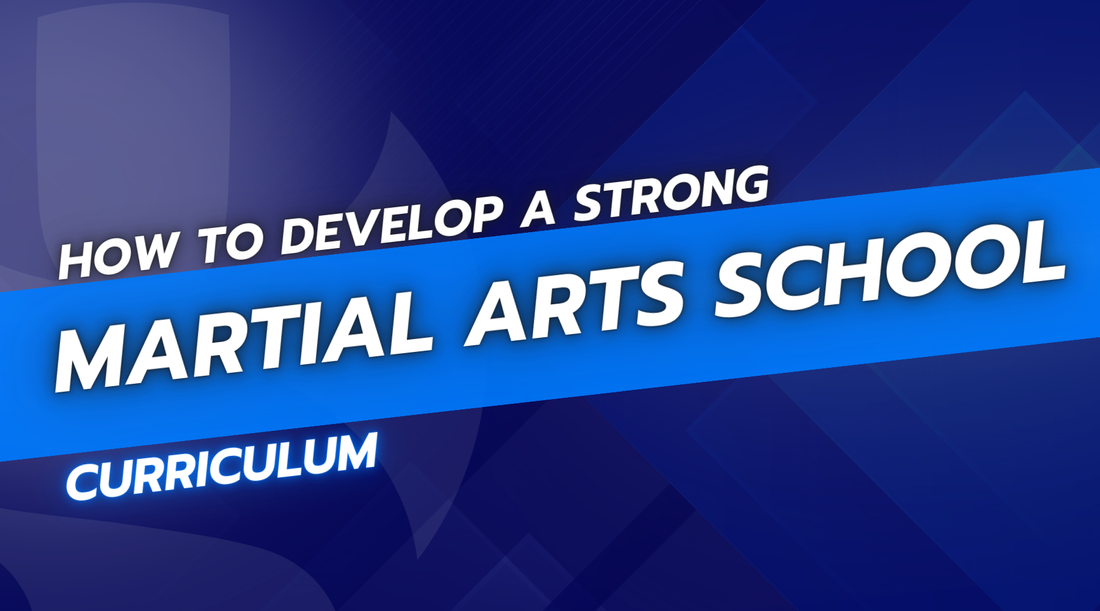
How to Develop a Strong Martial Arts School Curriculum
Share
Developing a strong curriculum is crucial for the success of any martial arts school. A well-structured program not only helps students progress efficiently but also instills the core values of martial arts such as discipline, respect, and perseverance. In this article, we will explore the key elements of creating a robust martial arts curriculum that caters to all age groups and skill levels, ensuring a comprehensive and enriching learning experience.
Understanding Your Martial Arts Style
Before you start crafting your curriculum, it's essential to have a deep understanding of your martial arts style. Whether it’s Karate, Taekwondo, Judo, or any other form, each style has its unique principles, techniques, and philosophies. Identifying these core elements will help you build a curriculum that stays true to the essence of the martial art you are teaching. Differentiate your style by focusing on its distinctive features and how they contribute to overall physical and mental development.
Setting Goals and Objectives
Establishing clear goals and objectives is the foundation of any effective curriculum. Start by defining what you want your students to achieve both in the short term and long term. These goals should be specific, measurable, achievable, relevant, and time-bound (SMART). For example, a short-term goal could be mastering a basic form, while a long-term objective might be earning a black belt. Clear objectives provide direction and help in tracking progress.
Structuring the Curriculum
A balanced curriculum should include both theoretical knowledge and practical application. This ensures students understand the 'why' behind their actions. Structure your curriculum to allow for progressive skill development, where students build on their knowledge and abilities over time. Begin with foundational techniques and gradually introduce more complex forms and sparring practices as students advance.
Age and Skill Level Considerations
Tailoring your curriculum to cater to different age groups and skill levels is crucial. Young children require a different approach compared to teenagers or adults. For instance, kids’ classes should focus more on fun, basic movements, and games that teach martial arts principles. On the other hand, adult classes can be more intense and technique-focused. Similarly, beginners need a strong emphasis on basics, while advanced students require more challenging techniques and sparring opportunities.
Core Components of the Curriculum
- Warm-ups and Conditioning: Start each class with proper warm-ups to prevent injuries and improve flexibility. Incorporate conditioning exercises to build strength and stamina.
- Basic Techniques and Forms: These are the building blocks of any martial arts practice. Ensure students master basic stances, strikes, blocks, and kicks before moving on to advanced techniques.
- Advanced Techniques and Sparring: Once the basics are solid, introduce more complex techniques and sparring sessions to help students apply what they’ve learned in realistic scenarios.
Integrating Life Skills and Values
Martial arts is not just about physical prowess; it’s also about developing character. Integrate lessons on discipline, respect, perseverance, and self-control into your curriculum. Discuss the importance of mental and emotional strength and provide opportunities for students to practice these values, such as through meditation or community service projects.
Incorporating Safety Measures
Safety should be a top priority in any martial arts school. Ensure that your training environment is safe and that students are taught proper techniques to avoid injuries. Use appropriate protective gear and maintain a clean, organized training space. Regularly inspect equipment and facilities to ensure they are in good condition.
Evaluation and Assessment
Regular testing and grading are vital for tracking student progress and maintaining high standards. Develop a comprehensive assessment system that includes both practical and theoretical components. Provide constructive feedback to help students improve and motivate them to reach their next level.
Instructor Training and Development
Your instructors play a critical role in delivering the curriculum. Invest in their continuous education and professional development. Encourage them to attend workshops, seminars, and advanced training sessions. Emphasize the importance of strong leadership skills and the ability to inspire and motivate students.
Student Engagement and Motivation
Keeping students engaged and motivated is key to their success. Use a variety of teaching methods to cater to different learning styles. Create a supportive and inclusive community where students feel valued and encouraged. Celebrate achievements and provide positive reinforcement to boost confidence.
Incorporating Technology
Leverage technology to enhance your curriculum. Use online resources and tools to supplement in-person training. Consider virtual classes and assessments to provide flexibility and reach a wider audience. Online platforms can also be used for sharing instructional videos, tracking progress, and communicating with students and parents.
Feedback and Improvement
Continuously seek feedback from students and parents to understand what’s working and what needs improvement. Regularly review and update your curriculum based on this feedback and the latest developments in martial arts training. Stay open to new ideas and be willing to make changes that enhance the learning experience.
Marketing Your Curriculum
Promote your school’s unique curriculum through various marketing channels. Highlight the benefits of your program, such as its comprehensive nature, emphasis on character development, and success stories of past students. Use testimonials and case studies to build credibility and attract new students.
Final Thoughts
Developing a strong martial arts school curriculum requires careful planning, a deep understanding of your martial arts style, and a commitment to continuous improvement. By setting clear goals, structuring your program effectively, and prioritizing safety and student engagement, you can create a curriculum that not only teaches martial arts skills but also instills valuable life lessons. Keep refining your approach, and your school will become a place where students thrive both physically and mentally.
